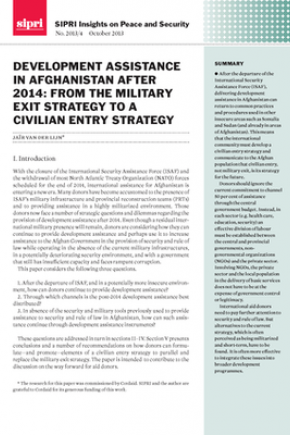Development Assistance in Afghanistan after 2014: From the Military Exit Strategy to a Civilian Entry Strategy
After the departure of the International Security Assistance Force (ISAF), delivering development assistance in Afghanistan can return to common practices and procedures used in other insecure areas such as Somalia and Sudan (and already in areas of Afghanistan). This means that the international community must develop a civilian entry strategy and communicate to the Afghan population that civilian entry, not military exit, is its strategy for the future.
Donors should ignore the current commitment to channel 50 per cent of assistance through the central government budget. Instead, in each sector (e.g. health care, education, security) an effective division of labour must be established between the central and provincial governments, non-governmental organizations (NGOs) and the private sector. Involving NGOs, the private sector and the local population in the delivery of basic services does not have to be at the expense of government control or legitimacy.
International aid donors need to pay further attention to security and rule of law. But alternatives to the current strategy, which is often perceived as being militarized and short-term, have to be found. It is often more effective to integrate these issues into broader development programmes.
The research for this paper was commissioned by Cordaid.
I. Introduction
II. Provision of development assistance after 2014
III. Distribution channels for development assistance
IV. Continuing support to security and rule of law through development assistance
V. Conclusions and recommendations: A civilian entry strategy

